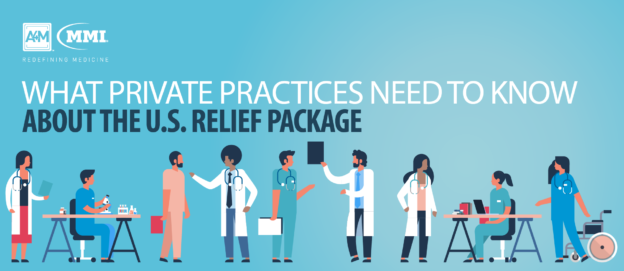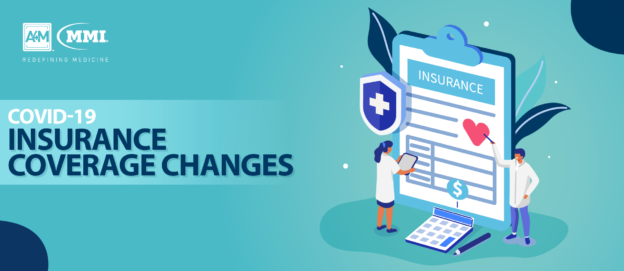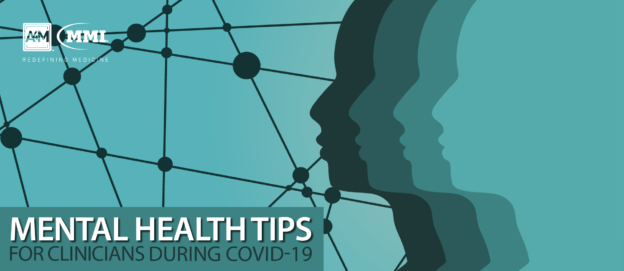There is a dire need for financial support of healthcare providers and facilities as they continue to battle the COVID-19 pandemic, now affecting the United States the most drastically. In response, the President signed the bipartisan CARES Act on March 27, 2020, providing much-needed relief funds to hospitals and other healthcare providers on the frontlines of the fight against coronavirus. As part of the recently announced CARES Act, $100 billion will be appropriated to create a Public Health Social Service Emergency Fund with an ultimate goal of preventing, preparing for, and responding to the coronavirus outbreak both domestically and on an international scale.
Per the Act, funding will be dedicated to reimbursing healthcare-related expenses or lost revenue attributable to COVID-19 to alleviate some of the financial burden many providers are experiencing. Part of this relief payment will focus on ensuring that uninsured Americans have access to testing and treatment, and that medical professionals providing the care are reimbursed for their work. The Department of Health and Human Services has published detailed criteria for the process of distribution of funds under the Act as well as information about eligibility requirements, outlined below.
Immediate Relief Funding
Recognizing the urgent need for the delivery of financial relief, the HHS immediately infused $30 billion into the American healthcare system. Payments are slated to arrive via direct deposit beginning April 10, 2020 to eligible providers throughout the system. Note, these are direct payments, not loans and will not need to be repaid, the HHS emphasizes.
Eligibility for Immediate Relief Payments
Per guidance from the HHS, all facilities and providers that received Medicare fee-for-service (FFS) reimbursements in 2019 are eligible to receive payments from this initial rapid distribution. Payments to practices that are part of larger medical groups will be sent to the group’s central billing office, while all relief payments will be made to the billing organization according to its Taxpayer Identification Number (TIN).
In order to be eligible to receive these funds, providers must not seek to collect of out-of-pocket payments from a COVID-19 patient that are greater than what they would be otherwise had the care been provided by an in-network practitioner. If a practice had to halt business operations as a result of the COVID-19 outbreak, providers may still be eligible to receive funds if they provided diagnoses, testing, or care for patients with possible or confirmed cases of COVID-19. Per the HHS, “Care does not have to be specific to treating COVID-19. HHS broadly views every patient as a possible case of COVID-19.”
The immediate relief payments hope to alleviate providers in hard-hit COVID-19 areas and those who are struggling to keep their practice open due to delayed care and widespread cancellations of elective procedures.
Payment Distributions
Payment distributions will be based on the provider’s or practice’s share of total Medicare FFS reimbursements for the year 2019; that year, the total FFS payments were approximately $484 billion. Providers can estimate their anticipated payment by dividing their 2019 Medicare FFS (excluding Medicare Advantage) payments – which can be obtained from their organization’s revenue management system – by $484 billion and multiplying that ratio by $30 billion.
Receiving Payments
In partnership with UnitedHealth Group (UHG), the HHS will provide rapid payments to eligible providers, as described above, to distribute the initial round of funding. Providers will be paid via their Automated Clearing House account information on file with UHG or the Centers for Medicare & Medicaid Services (CMS) and can expect to receive payments via Optum Bank with “HHSPAYMENT” as the payment description. Providers who receive reimbursements from CMS via paper check can expect to receive a paper check in the mail within the next few weeks.
Providers must sign an attestation confirming receipt of the funds and agreeing to the terms and conditions of payment within 30 days of receipt. The Terms and Conditions of the funding can be found on the CMS website. If the payment is not returned within 30 days, the HHS will view this as an acceptance of the Terms and Conditions. However, if a provider does not wish to comply with the Terms and Conditions, they must contact HHS within 30 days of receipt of payment and then return the full payment to HHS.
Different Types of Providers
All relief payments are being made to providers according to their tax identification number (TIN). Large organizations will receive payments for each of their billing TINs that bill Medicare, and should look to the part of their organization that handles Medicare billing to identify details on Medicare payments for 2019. Employed physicians should not expect to receive an individual payment directly; instead, their employer’s organization will receive the relief payment as the billing organization. Similarly, individual physicians and providers in a group practice are unlikely to receive individual payments directly; the group practice will receive the relief fund payment as the billing organization. Solo practitioners who bill Medicare will receive a payment under the TIN they use to bill Medicare.
The Remaining $70 Billion
As part of the $100 billion guaranteed by the CARES Act, the remaining $70 billion will be comprised of targeted distributions focused on providers in areas particularly impacted by the virus, rural providers, providers of services with lower shares of Medicare reimbursement or who predominantly serve the Medicaid population, as well as providers requesting reimbursement for the treatment of uninsured Americans. More guidance is expected on the structure of these payments in the coming weeks.
COVID-19 Medical Expenses
The federal government is taking measures to ensure Americans are not surprised by medical expenses and are protected against financial obstacles that might prevent them from seeking care or getting tested and treated for COVID-19. A portion of the Provider Relief Fund will be used to reimburse healthcare providers at Medicare rates for COVID-related treatment of the uninsured. However, providers are prohibited from “balance billing” any patient for COVID-related treatment in order to be eligible.
In addition, the Families First Coronavirus Response Act requires private insurers to cover an insurance plan member’s cost-sharing payments for COVID-19 testing. Further, the government has secured commitments from private insurers – such as Humana, Cigna, UnitedHealthGroup, and the Blue Cross Blue Shield system – to waive cost-sharing payments for treatment related to COVID-19 for its members and make medical care more accessible.
Heavily anticipated by providers across the nation, the latest guidance helps to clarify eligibility, distribution, and payment concerns regarding the Provider Relief Fund. Eligible practices and providers may soon expect to receive payments from the immediate round of funding. In the meantime, medical professionals can access more information about and the latest developments concerning the CARES Act Provider Relief Fund here.



